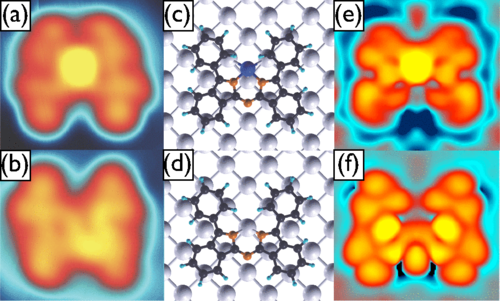The Kondo resonance of an organic molecule containing a Co atom is investigated by scanning tunneling spectroscopy and ab initio calculations on a Ag(100) surface. High resolution mapping of the line shape shows evidence of local nonradially symmetric variations of the Fano factor and the Kondo amplitude, revealing a strong influence of the molecular ligand. We show that the decay of the amplitude of the Kondo resonance is determined by the spatial distribution of the ligand's orbital being hybridized with the singly occupied Co d(z2) orbital, forming together the singly occupied Kondo-active orbital.

The Kondo resonance of an organic molecule containing a Co atom is investigated by scanning tunneling spectroscopy and ab initio calculations on a Ag(100) surface. High resolution mapping of the line shape shows evidence of local nonradially symmetric variations of the Fano factor and the Kondo amplitude, revealing a strong influence of the molecular ligand. We show that the decay of the amplitude of the Kondo resonance is determined by the spatial distribution of the ligand's orbital being hybridized with the singly occupied Co d(z2) orbital, forming together the singly occupied Kondo-active orbital.
